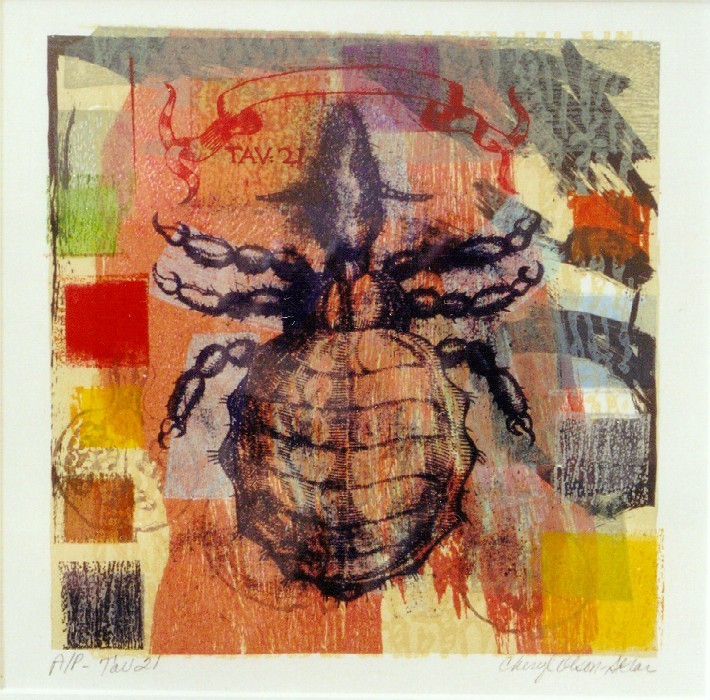Cheryl Olson-Sklar
Associate Lecturer, Department of Visual Art, University of Wisconsin-Milwaukee
Shuffling through information and imagery in the Special Collections Department of the Golda Meir Library, I concentrated on a search to locate a unique, personal resource. The power of integration, holding a connection or link for inventive work or image making was immediately evident as soon as Max Yela placed the sixteenth-century Italian text in my hands. The book, small in format, contrasted with the golden patina of the book cloth, the eloquent printing, and majestic insect engravings surrounded by scrolls and elaborate banners. I quickly identified with the shape and texture of these monumental forms. They provided connotations and analogies, which allowed me to recast and reform the resource materials. While remaining open to a visual outcome and getting to know these images, I was completely unaware that what I was attracted to and cherished was a book of poultry lice.
TAV 21.
Monotype, multiple toray, photo polymer plate, stencil (mylar, wood, wallpaper).
8" x 8".
Strongly connected to the tradition of collage, the forms gathered from this research were combined with loose fragments I had saved, uncovered, appropriated and de-constructed to weave the backgrounds. Starting in one place, often the color and texture would fight to create form. The compositions were further orchestrated by my interest in different ways of putting lines together. The hand-engraved plates of lice provided monumental linear fragments, while the marks of transferred delicate doodles and meandering scribbles, wood textures, and frottage all combined to leave the chance of strange and unexpected marks and shapes printed over each other. The continued process and investigation of photo-polymer plates and other commercially adapted printing materials (Toray/waterless lithography) provided a structure. Bit by bit, through reconstruction, like children’s puzzles, I managed to assemble the pieces of the completed images. The images built up gradually through the printing, transferring, and super-imposing of multiple layers which were put together on the press. The intent was to acquire a richness and multiplicity of form and content.
The visual vocabulary of personal icons, symbols, and central figures suggests several sources of inspiration and points of departure. The process and the acquired resource materials offer the possibility of spinning unlimited and unforeseeable renderings of iconographic and figurative subjects. Multiple plates were developed, but have not yet been used. Other plates, layered in images, appear again and again in various experimentations with the human image combined with the qualities of the insects. Fortunately, the print process also provides a delayed creativity and a reversal, just as one sees a reflection in the mirror.

